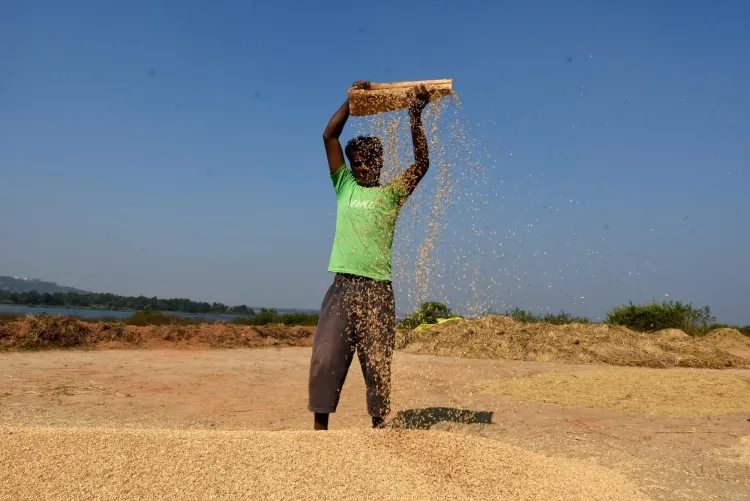Will India Achieve Record Growth in Kharif Crop Output?

Synopsis
Key Takeaways
- Overall foodgrain output expected to reach 173.33 million tonnes.
- Rice production to increase by 1.73 million tonnes.
- Maize production likely to rise by 3.4 million tonnes.
- Strong performance in oilseed and sugarcane production.
- Weather conditions played a crucial role in crop performance.
New Delhi, Nov 26 (NationPress) India is on track to achieve a record surge in the production of key kharif crops, with the total foodgrain output projected to rise by 3.87 million tonnes to reach 173.33 million tonnes, as announced by the government on Wednesday.
The Union Agriculture Minister Shivraj Singh Chouhan unveiled the initial advanced estimates of the main kharif crops, indicating significant increases in kharif rice and maize.
Estimates suggest that rice production will reach 124.5 million tonnes, an increase of 1.73 million tonnes compared to last year, while maize production is expected to hit 28.3 million tonnes, reflecting a year-on-year increase of 3.4 million tonnes.
Overall, kharif coarse cereals are anticipated to total 41.4 million tonnes, alongside 7.4 million tonnes of pulses, which includes tur (arhar) at 3.59 million tonnes, urad at 1.2 million tonnes, and moong at 1.72 million tonnes.
The minister noted that while excessive rainfall impacted crops in certain regions, the majority benefited from favorable monsoon conditions, leading to robust crop growth.
Oilseed production is estimated at 27.56 million tonnes, with soybean at 14.26 million tonnes. Additionally, groundnut production is projected to be 11 million tonnes, which is 0.68 million tonnes more than the previous year.
Sugarcane production is forecasted at 475.6 million tonnes, an increase of 21 million tonnes from last year. Cotton production is anticipated to be 29.2 million bales (with each bale weighing 170 kilograms), and the production of Patson and Mesta is expected to reach 8.3 million bales.
These projections are based on yield trends from prior years, other ground-level data, regional assessments, and primarily, information received from states. Adjustments will be made upon the availability of actual crop yield data from cutting experiments, the statement clarified.









